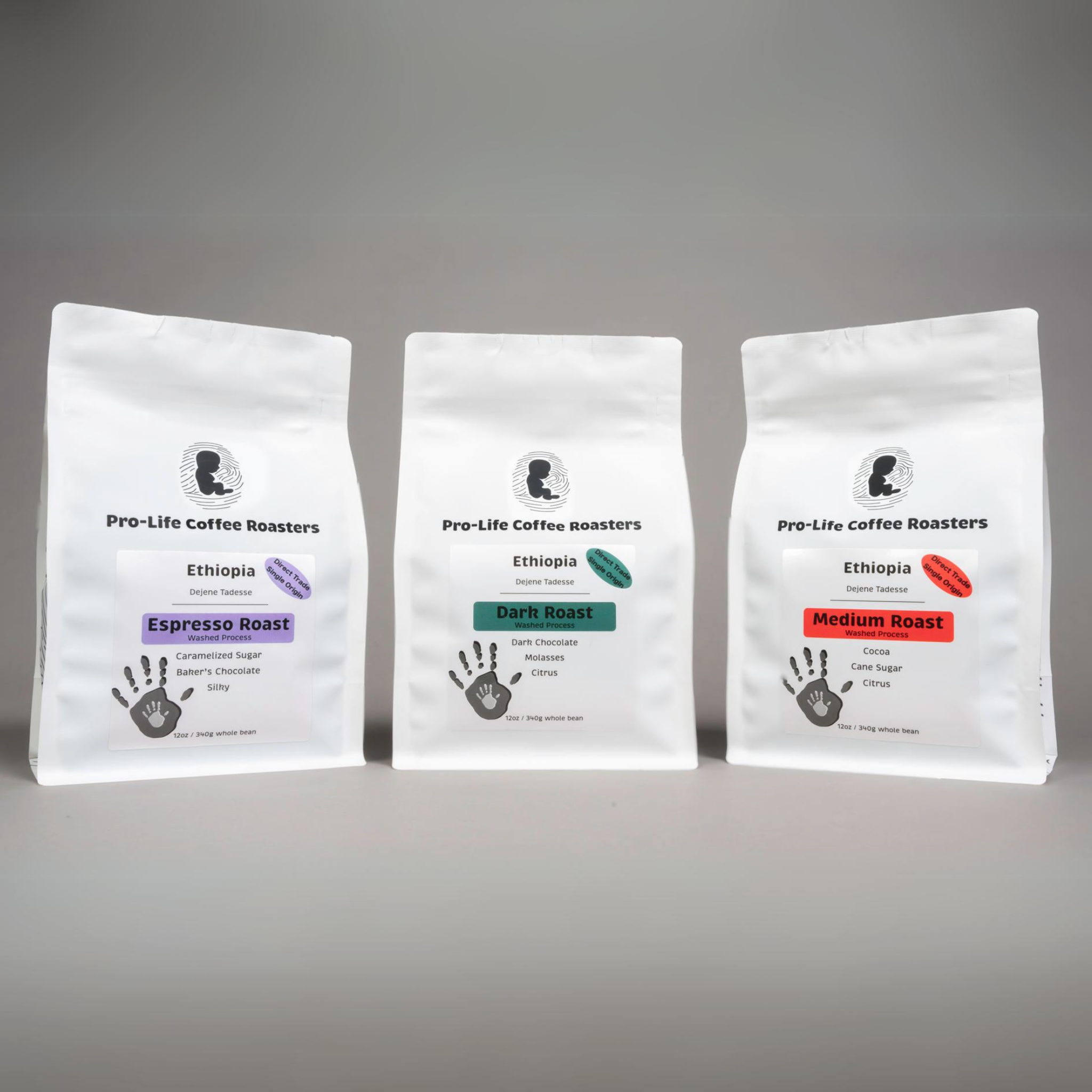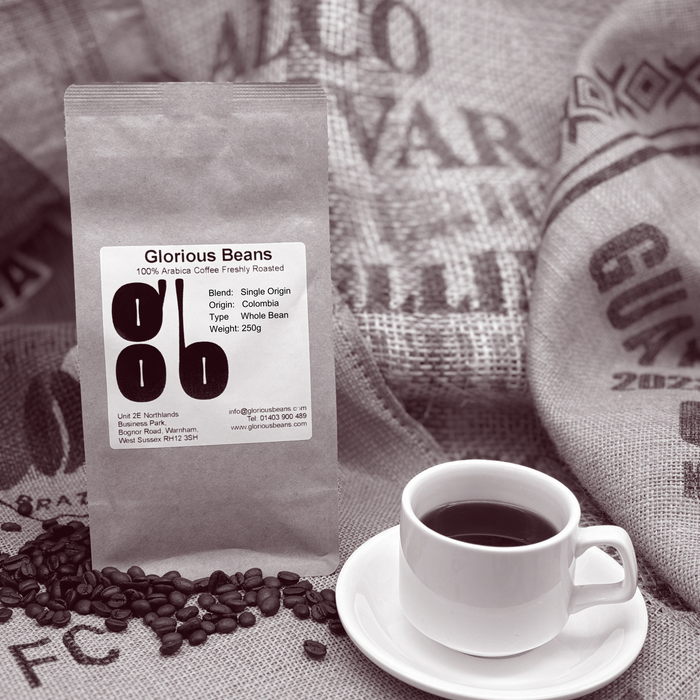Recognizing Coffee Beans: the Trip From Coffee to Blended Coffee Beans

The Origins of Coffee: A Global Viewpoint
While you may consider coffee as a modern staple, its beginnings trace back centuries, linking with societies across the world. The story begins in Ethiopia, where legend claims a goat herdsman named Kaldi uncovered the invigorating effects of coffee beans after observing his goats frolicking energetically after consuming them. This sparked rate of interest, resulting in coffee's infect Arab traders that valued the brewed drink. By the 15th century, it got to Persia, Egypt, and Turkey, where coffeehouses came to be social hubs for discussion and culture.
As profession paths expanded, coffee made its means to Europe in the 17th century, quickly acquiring popularity. It changed from a mystical drink right into a daily ritual, intellectual exchanges and inspiring events. Each society added its distinct twist to coffee prep work, improving its history. This global trip highlights how coffee links us, transcending borders and unifying varied practices through a simple bean.
Cultivation and Harvesting of Espresso Beans
As coffee's journey progressed, the emphasis shifted to the growing and harvesting of certain bean ranges, especially those utilized for espresso. You'll find that espresso beans commonly originate from Arabica or Robusta plants, each offering unique tastes. The ideal growing conditions consist of high altitudes and abundant, well-drained dirt, which boost the beans' high quality.
Throughout the harvest, choosing methods vary. Timing is vital; you desire to gather when the cherries get to peak perfection for maximum taste.
When harvested, the beans are planned for handling, which is vital in determining their last taste. Understanding the farming and gathering processes gives you insight into what goes right into your favorite coffee, enhancing your gratitude for each and every mug.
Processing Techniques: From Cherry to Bean
Now that you have actually found out about gathering espresso beans, allow's discover exactly how those cherries transform into the coffee beans you love. You'll see how various harvesting methods effect flavor, adhered to by the vital actions of fermentation and drying. We'll damage down the milling and grading process that identifies your coffee's top quality.
Harvesting Strategies Discussed
When it comes to coffee, understanding harvesting methods is vital, considering that they straight influence the taste and top quality of the beans you take pleasure in. Careful choosing includes hand-picking only ripe cherries, ensuring you obtain the ideal top quality beans. Inevitably, the option of gathering method can significantly influence your coffee experience, so it's worth knowing how those beans made it to your mug.
Fermentation and Drying Out
After gathering, the next action in processing coffee beans play a significant role fit their taste. You'll discover that fermentation is important, as it assists break down the mucilage bordering the beans, boosting their taste profile. Depending on the approach, this process can last from a few hours to numerous days, with differing results based upon temperature level and humidity.
Once fermentation is complete, drying out complies with, which is similarly crucial. You can select from mechanical or sun-drying drying techniques. Sun-drying allows the beans to soak up tastes from the atmosphere, while mechanical drying out warranties consistent moisture degrees no matter of weather. Proper drying is vital to stop mold and mildew and protect the beans' quality, eventually influencing your cup of coffee.
Milling and Grading Process
As fermentation and drying out set the phase for taste development, the milling and grading process guarantees that only the very best coffee beans make it to your cup. This phase includes removing the external layers of the coffee cherry, including the parchment and husk. After milling, the beans are sorted by size and weight, ensuring a consistent top quality. You'll discover that grading assists identify flaws and categorize beans, which influences flavor and aroma. Top notch beans receive a greater quality, leading to a richer coffee experience. When graded, the beans are ready for product packaging and delivery, maintaining their unique features. This precise procedure is vital for delivering the phenomenal preference you appreciate in every sip of your favored mixture.
Roasting Techniques: Opening Taste Possible
When you roast coffee beans, the approach you pick can drastically affect the flavor profile. Understanding the relationship between time, temperature, and toasting strategies is vital to disclosing the possibility of your brew. Let's explore how these elements collaborated to create the excellent cup.
Roasting Methods Clarified
While you could think that all coffee roasting approaches generate the very same outcomes, the reality is that each strategy exposes distinct flavor possibilities in the beans. You can select between methods like drum toasting, air roasting, and even conventional pan roasting. Drum toasting utilizes a rotating drum to equally disperse warm, enhancing caramelization and producing a well balanced taste. Air roasting, on the various other hand, distributes warm air around the beans, advertising a lighter roast with obvious level of acidity. Pan roasting permits for hands-on control but calls for continuous attention to stay clear of burning. Each technique has its nuances, so trying out different strategies can assist you discover the excellent roast that lines up with your preference preferences. Delight in the trip of discovering your perfect mug!

Influence On Flavor Account
Different roasting techniques not just influence the process yet also considerably affect the flavor account of the coffee beans. When you pick a light roast, you'll experience bright acidity and flower notes, showcasing the bean's beginning. On the other hand, a medium roast balances level of acidity with sweet taste, frequently revealing chocolatey touches. Dark roasts, on the other hand, draw out vibrant, great smoky tastes, in some cases concealing the bean's one-of-a-kind characteristics. Each technique exposes various oils and substances, leading to a large range of tastes. By experimenting with various roasting styles, you can find which profiles resonate with your taste buds. Comprehending these nuances assists you value the virtuosity behind your mug of coffee, boosting your total experience with every sip.
Time and Temperature Level Variables
To launch the complete flavor potential of coffee beans, both time and temperature throughout the toasting procedure play look at more info considerable roles. When roasting, you'll locate that greater temperature levels can swiftly establish flavors, yet if you hurry it, you may wind up with burned notes. Alternatively, reduced temperatures enable a much more gradual flavor growth, showcasing the beans' one-of-a-kind attributes.

Timing is equally as important; prolonging the roast as well long can lead to a loss of level of acidity and illumination, while as well short a roast could leave the beans underdeveloped. Discovering that sweet place needs technique and testing. By adjusting these variables, you can expose the abundant, intricate flavors concealed within each bean, creating a genuinely remarkable coffee experience.
The Art of Mixing: Crafting Unique Coffee Profiles

Beginning by selecting a base coffee that supplies a strong structure. Then, select corresponding beans to enhance certain taste notes. An intense Ethiopian bean can bring fruitiness, while a rich Brazilian coffee adds body. Trial and error is key-- don't hesitate to readjust ratios until you find your suitable account.
As you blend, keep in mind that each combination narrates. You're not just making coffee; you're producing an experience. So, take your time, preference regularly, and take pleasure in the journey of finding your trademark mix.
Developing Techniques: Just How Prep Work Influences Taste
Blending coffee opens up a domain name of taste possibilities, yet exactly how you brew that mix can significantly affect your final cup. On the various other hand, a pour-over highlights the coffee's clarity and illumination, ideal for showcasing fragile notes.
Coffee, with its high pressure, creates a concentrated shot that emphasizes sweetness and crema. If you favor a lighter brew, consider a cold mixture method; it produces a smooth, much less acidic taste.
Inevitably, testing is essential. Adjusting variables like water temperature level, grind dimension, and make time can change your coffee's account. So, accept the art of brewing to uncover the tastes hidden in your coffee blends. The right approach can elevate your experience to new elevations.
The Future of Coffee: Sustainability and Advancement
As the coffee sector develops, sustainability and technology are becoming crucial for dealing with ecological challenges and meeting consumer needs. You'll discover that more coffee business are taking on environmentally friendly methods, from sourcing beans morally to implementing sustainable farming methods. These changes not just aid the planet however additionally enhance the high quality of the coffee you appreciate.
You might see developments like eco-friendly packaging and water-saving developing methods that lower waste. Advanced innovation, such as blockchain, is additionally ending up being preferred, guaranteeing transparency in the supply chain, which permits you to trace your coffee back to its beginnings.
On top of that, spending in neighborhood areas and sustaining farmers with reasonable profession campaigns cultivates an extra lasting coffee ecosystem. As you drink your following mug, keep in mind that your selections can add to a brighter future for coffee. By selecting lasting brand names, you're not simply appreciating a drink; you're making a favorable effect on the world.
Frequently Asked Questions
What Is the Difference In Between Arabica and Robusta Beans?
Arabica beans are smoother, sweeter, and have a greater acidity, while robusta beans are more powerful, extra bitter, and consist of more caffeine. You'll see these distinctions in flavor and fragrance when brewing your coffee.
How Does Elevation Affect Coffee Bean Flavor?
Altitude effects coffee bean flavor considerably. Greater elevations produce beans with brighter level of acidity and complex tastes, while reduced altitudes often produce beans that are much heavier and less nuanced. You'll see these differences in your cup!
What Are the Wellness Advantages of Drinking Coffee?
Consuming alcohol coffee can enhance your energy, boost psychological focus, and even boost physical efficiency. It's abundant in anti-oxidants, might reduce the danger of certain diseases, and can advertise a healthier metabolic rate when consumed in moderation.
Can Coffee Beans Be Recycled for Developing?
Yes, you can reuse coffee beans for developing, yet the flavor may be weaker. If you take pleasure in trying out, try recycling them in different methods, like cold brews or including to healthy smoothies for an added kick.
How Should I Store Coffee Beans for Quality?
To maintain your coffee beans fresh, store them in a closed container in a cool, dark location. Stay clear of exposing them to warmth, light, or moisture, as these variables can rapidly deteriorate their taste and scent.
Recognizing Coffee Beans: the Journey From Espresso to Blended Coffee Beans.
Now that you've discovered concerning collecting espresso beans, let's check out just how those cherries transform into the coffee beans you like.When you roast coffee beans, the approach you pick can substantially affect the taste profile check these guys out - Single Origin Espresso.While you might believe that all coffee toasting approaches yield the same results, the reality is that each strategy reveals distinct flavor capacities in the beans.Various toasting techniques not just affect the procedure yet additionally greatly affect the flavor profile of the coffee beans